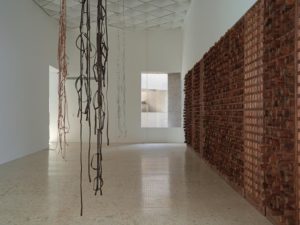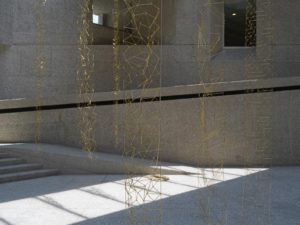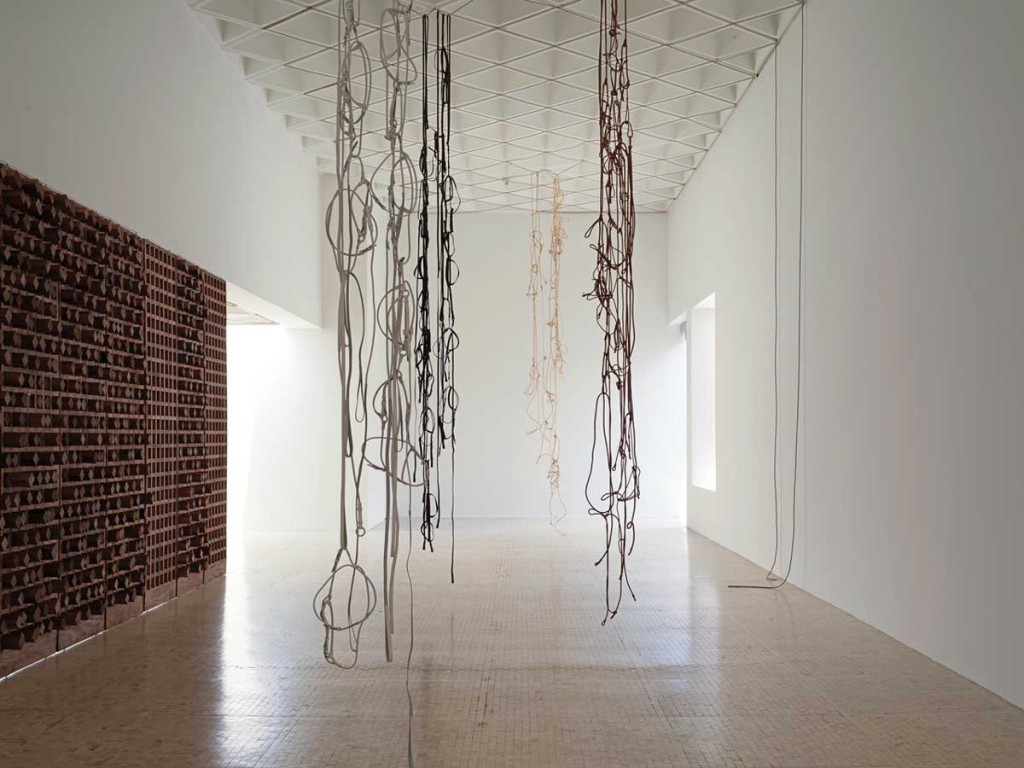In the creative dimension of Leonor Antunes (Lisbon, 1972), concepts such as materiality and form of the artwork constantly coexist finding a profound, symbolic and historical meaning. The starting point for the installations of the artist is an investigation into materials and their functional dimension that embraces the processes of production and the spatial context of the final work.
“Discrepancias with C.P. Leonor Antunes” is the title of the exhibition organized and promoted by the Tamayo Museum in Mexico City, a cultural space dedicated to the modern and contemporary art settled in the outskirts of Polanco Quarter and active since 1981. The event will be open to the public until the 2nd of September, representing the first large-scale solo exhibition project that the museum is dedicating to the Portuguese artist, whose research is inspired by a constant interest in the history of architecture, design and art of the twentieth century.
Antunes installations are the result of a technical and cultural reflection on the formal possibilities of objects and materials, whose sculptural and plastic sense is in constant dialogue with the space of the exhibition. The choice of materials such as metal, wood and natural fibre responds to her curiosity about manufacturing techniques and interest in that category of objects generated by art that have a tangible existence in real and everyday life. A constant and subtle flow of ideas lives inside concrete objects and thus artistic action represents the possibility of reimagining them in new connections and presences.
The series discrepancies presented at the Mexican museum represents the attempt to establish a technical and formal dialectic with the work of architects and designers, especially women, of the twentieth century. Following a rational logic, the artist uses fragments of existing objects or traditional decorative motifs, recomposing them in visual epiphanies that are real, concrete, geometric and perfectly inserted in a new spatial and temporary context.
The tensions hidden beyond the material presence of the object are released and recomposed through a process that is intuitive and linear in restoring an essential and harmonious aesthetic where there is no place for linguistic and visual redundancy.
The object represent a mediation between the current dimension and historical reminiscences, becoming a memory container placed in a context that is essential for the construction of a narrative that allows the work to be told, perpetuating its existential continuity in time.
The artist is born in Portugal, in Lisbon, but lives in Berlin since 2004. Her works have been featured in international events such as the 57th Venice Biennale (Venice 2017), the Bienal de Sharjah 12, Sharjah, Emiratos Árabes Unidos (2015); the Triennial Kleinplastik Fellbach 2013, Fellbach, Alemania; 8va Bienal de Berlín, Berlín, Alemania (2014); 3er Bienal de Singapur, Singapur (2011); Bienal de Maia, Maia, Portugal (1999).
Giuliana Schiavone
 Discrepancias con C.P. Leonor Antunes. Vistas de instalación. Fotografía: © Nick Ash. Cortesía del Museo Tamayo
Discrepancias con C.P. Leonor Antunes. Vistas de instalación. Fotografía: © Nick Ash. Cortesía del Museo Tamayo
 Discrepancias con C.P. Leonor Antunes. Vistas de instalación. Fotografía: © Nick Ash. Cortesía del Museo Tamayo
Discrepancias con C.P. Leonor Antunes. Vistas de instalación. Fotografía: © Nick Ash. Cortesía del Museo Tamayo
 Discrepancias con C.P. Leonor Antunes. Vistas de instalación. Fotografía: © Nick Ash. Cortesía del Museo Tamayo
Discrepancias con C.P. Leonor Antunes. Vistas de instalación. Fotografía: © Nick Ash. Cortesía del Museo Tamayo
Giuliana Schiavone. Art critic and curator based in Italy and Mexico dedicated to the communication and teaching of visual arts. Active contributor to national and international art and fashion magazines as well as promotion of contemporary art. Actively working for cultural and exhibition projects. Graduated as Art Historian and Jazz Musician with a Master in Art Curatorship following an interdisciplinary vision of artistic and aesthetic phenomenons.







NO COMMENT